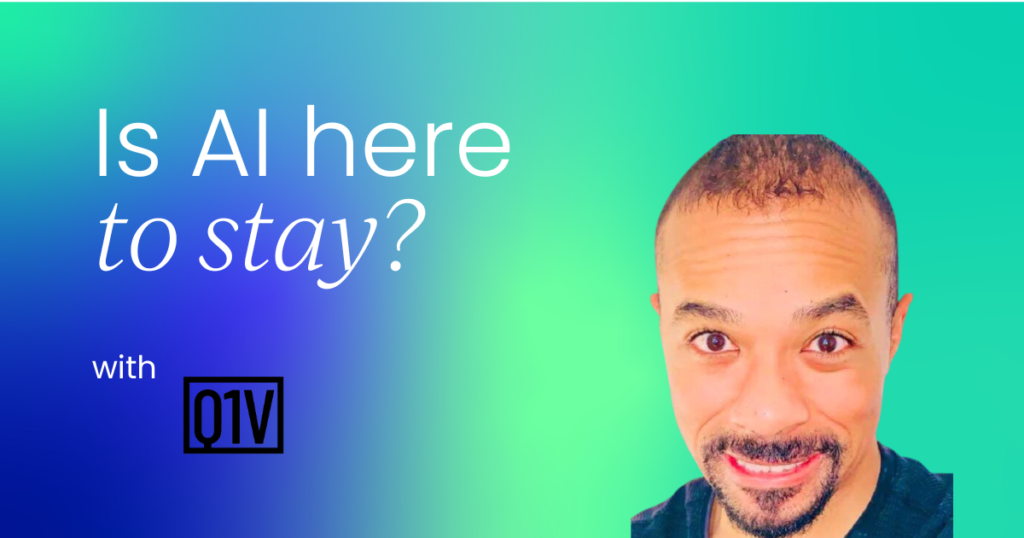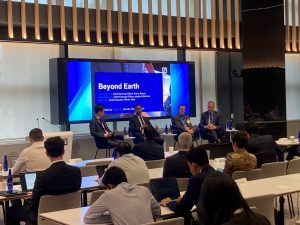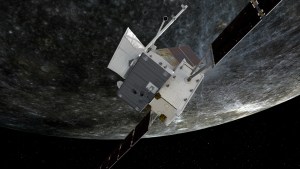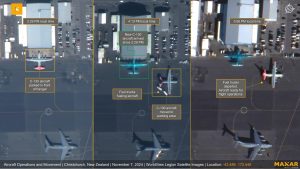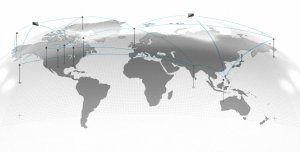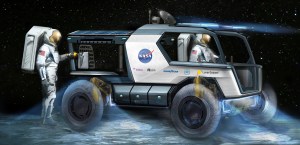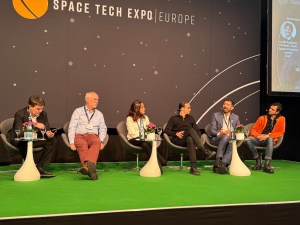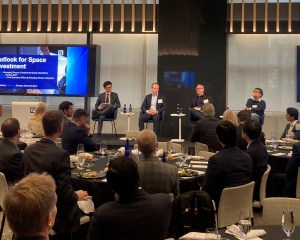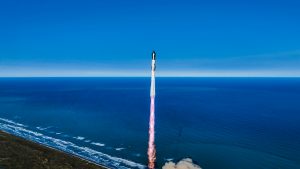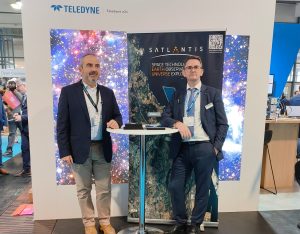Sustainability vs scalability
Artificial Intelligence (AI) is the most disruptive technology of our time, but as its impact continues to unfold, many are questioning whether it’s just another tech fad, or if it’s here to reshape the future permanently.
The rapid rise of AI has been met with both excitement to revolutionize our world and skepticism and growing concern about the long-term feasibility and ethical risks.
So, are we being duped into believing AI is scalable enough to solve all of our problems? Or will it stand the test of time, proving itself sustainable to humanity and our evolving world? These are the questions I want to address in this writing.
Ahh the question of “Is AI sustainable? No, it is not sustainable, it is scalable, and that is what will make it sustainable.
I think digging into whether AI is sustainable is quite simply how we approach it. AI is a lot like engineered transportation. Vehicle mobility has taken us from being foot mobile or horse and buggy to traveling around the world in just a matter of hours.
This is what AI has and will continue to do for us. Just like engineered transportation has not gone anywhere, nor will it ever, nor will AI. The problems that exist with engineered mobility over the last 135-plus years still exist today by and large.
For example, cars still wreak havoc on our environment, and they are dangerous at points depending on how they are controlled, but that does not mean they have not been scalable or become obsolete. It is clear for humans the benefits of engineered mobility have far outweighed the collateral damage.
We have worked hard and continue to work hard to put laws and regulations in place at the organizational and consumer levels as to how cars and even planes and the like are built, used and operated. But cars are definitely not sustainable, if they were then we wouldn’t junk them every 10 years.
We cannot continue to operate engineered mobility the way we do because it does have its dangers, and it does wreak havoc on our earth. AI is much the same and it is not sustainable in its current existence.
Scalability and sustainability are closely connected, but they are distinct concepts that often get confused very often.
Most inventions start off in a phase where they are not inherently sustainable. At this early stage, they might be too costly, resource-intensive, or inefficient to sustain long-term.
However, as they scale—reaching larger markets, benefiting from economies of scale, improving their technology, and optimizing their production processes—they can become more efficient, less costly, and more adaptable to different environments. This scaling process is what ultimately feeds into making them sustainable.
The definition of sustainability
I think we would all agree that we cannot maintain engineered mobility in the way that we have in the past in an ongoing manner. We also cannot continue to deplete our resources and disrupt the ecological balance. It is not feasibly sustainable. It does not mean engineered mobility is going anywhere, rather, it is going to scale, which means it is going to get better, and eventually, sustainable.
Sustainable efforts in transportation (e.g., electric vehicles, fuel efficiency, regulations) have aimed to improve this. In the same way, AI sustainability focuses on minimizing energy consumption, reducing environmental impact, and ensuring fair use of resources and more energy-efficient models, similar to how transportation is moving towards electric vehicles.
I think people tend to get scalability and sustainability mixed up. Scalability feeds sustainability. There is a difference between sustainability and scalability. Engineered mobility has scaled continuously over the last century and a half, but it has never reached a point of full sustainability.
AI is similar.
The problems and challenges we face in AI does not mean AI is going anywhere, it just means it is going to get better, and eventually, sustainable.
The definition of scalability
The parallel drawn between AI and engineered mobility makes it clear that when first invented, both of these inventions were expensive, inefficient, sometimes unsafe and available to only a select few.
Over time, the scaling of manufacturing processes, infrastructure development, and technological improvements made them more affordable, more reliable, and widely accessible, thereby achieving better sustainability in their use and production.
Like engineered mobility, but in the context of AI, we see that it is currently highly scalable—new models can be deployed, adjusted, and integrated across various industries and applications with relative ease.
I think this is what we can expect for the future of AI.
To be or not to be, that is the question
“To be, or not to be, that is the question: Whether ’tis nobler in mind to suffer The slings and arrows of outrageous fortune, Or to take arms against a sea of troubles And by opposing end them.”
— William Shakespeare, Hamlet
To be
Some early adopters swear by AI’s potential to revolutionize industries, while others remain concerned about the long-term feasibility, sustainability, and ethical implications.
On the first account, the power of AI is already showing its muscle in areas like healthcare, finance, marketing, and many other sectors. With billions of dollars backing AI behind major corporations and high-profile investment entities, it is clear people are serious about AI and its promising future.
Or not to be
On the other hand ongoing issues with data privacy concerns, potential job displacement, power consumption, data shortages, and the challenge of creating explainable AI models leads many critics to believe we could all just be “duped” because we have adopted AI technologies prematurely without fully understanding their implications or long-term viability.
All of this skepticism extends to the possibility that as soon as AI could lose momentum, leading to a mass exodus of interest or what could be referred to as AI’s “dumping point.”
In reality, the true future of AI likely lies somewhere in between. Some applications are failing to scale and live up to the hype—similar to the many failed “AI wrapper” companies associated with the financial struggles of 2023 which began with the Silicon Valley Banking Collapse—while others are evolving to become much more integral to the way we live and work.
We are all AI bullish
I want to start with a question that someone in the business community said to me, “You seem so bullish on AI. I feel like we are in a bubble, and when we emerge, we will feel duped. But you feel so bullish – am I wrong?” I responded, “I am bullish on AI, and so are you. If you took away some of the things that make your life livable today, you’d quickly realize just how bullish you are. You’re probably using AI without even knowing it. Yes, I agree we are in a bubble because we are using AI many times when we do not know or fully understand its implications and consequences, which can lead to the overconfidence that produces market bubbles.”
How are we bullish? Well imagine having to do without some of your creature comforts today. When we start explaining to the very people who are reticent about AI the things which makes their lives comfortable and maintainable that they don’t typically think about are ran, powered and enabled by AI allows them to a paradigm shift to actually begin to realize how bullish they are on AI.
It’s like a person who would never eat a particular food product, but the end food product contains the ingredient of the particular food product they hate, and they love the end food product.
For example, Castoreum is used in Vanilla Flavoring, and Castoreum is a secretion from the anal glands of beavers. Something that would send most people praying to the toilet gods. Castoreum is still approved by the FDA as a “natural flavoring,” and it has been used in everything from Vanilla Ice Cream, Chewing Gum, to Alcoholic Beverages.
We can live without AI, but you wouldn’t want to
Living without AI would be a nightmare—a chaotic, life-threatening plunge into inefficiency and disaster. Every moment of your life would be slower, more stressful, and infinitely more dangerous.
Imagine scrambling through endless paperwork, wasting hours on menial tasks that AI currently handles in seconds, and facing constant delays in every transaction, whether you’re trying to get healthcare, travel, or even buy food. Businesses would spiral into inefficiency, grinding to a halt, leaving the economy in tatters and unemployment through the roof.
Healthcare systems would be crippled, with life-or-death decisions left to outdated manual processes, causing countless avoidable deaths and suffering as diagnoses are delayed, treatments are wrong, and medical errors skyrocket. Important infrastructure like power grids and supply chains would falter, causing massive blackouts, food shortages, and transportation collapses that could spark widespread panic and societal breakdown.
Security would be practically nonexistent; criminals would have a field day with weakened defenses, leading to rampant crime, data breaches, and potentially catastrophic cyber-attacks. AI has become our silent guardian, the shield that holds back chaos—and without it, the world would rapidly descend into a hellish, volatile, and dangerous state that would make survival, let alone daily living, a grueling ordeal.
Removing AI would disrupt productivity, critical systems, and innovation, drastically impacting how society functions and progresses. Removing AI in many ways would be like putting the entire world back several decades. We would potentially have massive blackouts, disease, crime, and very possibly large-scale conflicts. Removing AI would make it difficult, almost impossible, to revert to a world without it without facing significant consequences.
AI has now become integral in modern life, deeply cemented in daily routines, critical infrastructure, and industry workflows, making it nearly impossible to revert to a world without it. It drives efficiency, automates complex tasks, and provides data-driven insights that shape decision-making across sectors.
What are some examples of the things that are empowered by AI that we could not live without?
Navigation and ride-sharing services are closely connected, as they rely heavily on AI-enhanced satellite and GPS positioning systems to optimize routes, predict traffic, and provide estimated arrival times. Without the AI processing of GPS data, ride-sharing technologies like Uber and Lyft would struggle to operate efficiently.
Similarly, energy and utility management benefit from smart grid infrastructure powered by AI, which helps manage energy distribution more effectively and predict power demand spikes, ultimately preventing power outages. Without AI these things would not operate correctly.
A real-life incident: To live without AI is not living at all, literally
In 2016, a Tesla Model S, while in Autopilot mode, was traveling on a highway in the Netherlands and the vehicle’s AI-powered system detected that the car in front was about to collide with another car and automatically applied the brakes before the human driver could react.
The AI system used radar, cameras, and sensors to not only detect the car directly ahead but also analyze the traffic situation beyond it. The Autopilot’s collision avoidance system recognized that the vehicle ahead was decelerating suddenly and predicted an imminent crash.
Before the human driver had time to react, the Tesla autonomously braked, avoiding what could have been a high-speed collision that might have caused severe injuries or even death.
In the end, the AI saved both the driver and passengers from a life-threatening accident by reacting faster than a human could have in a dangerous situation.
Without AI the driver would have potentially died, and so in this case, to live without AI is not living at all.
Have we been duped by AI?
Many of us use AI frequently without realizing it, which can make us overconfident and careless, like bulls in a china shop…
In a way, by charging ahead without fully understanding AI, we risk becoming uninformed and ignorant about its capabilities and limitations, which leads to hard lessons. This can leave us vulnerable to deception and making decisions without all the information, leading us to feel like we have been duped.
This is a form of Black Box AI. What is Black Box AI and how can it be avoided?
Black box AI refers to artificial intelligence systems whose processes are opaque and difficult to interpret and fail to provide clear explanations for how they arrived at those outcomes. This lack of transparency can lead us to a feeling of being “duped”.
As an everyday user, if you are unfamiliar with AI, the best way to protect yourself is to be cautious and informed about the AI tools you use. Start by choosing reputable apps and platforms with good privacy policies and transparent explanations of how they use AI.
If you are asked to provide personal data, make sure you understand why it’s needed and how it will be used. Pay attention to any unexpected behaviors or decisions made by AI systems, and don’t hesitate to question or report issues if something seems off.
It’s also helpful to regularly review the permissions you grant to apps and to be cautious about sharing sensitive information. If possible, use platforms that allow you to adjust settings, like opting out of data collection or personalization features. Being mindful of these basics will help you stay informed about what and how you are using AI and ensure you do not become a victim of AI or a perpetrator of AI misuse.
The illusion of deception It’s easy to think that AI is deceiving us when things go wrong. We see rogue AI systems producing unexpected or incorrect outcomes, and it feels like we’ve been led astray. However, AI isn’t inherently deceptive; it doesn’t have intent or motive. Rather, it operates within the constraints and biases of the data and instructions it’s been given.
So I would say, no we have not been duped by AI, if we have been duped it is likely entirely our fault because of our approach to adopting AI. The responsibility relies on how humans engage with and understand AI, rather than suggesting that AI itself is inherently duping us.
As AI continues to evolve and take on more complex roles in society, from autonomous vehicles to healthcare and financial markets, it’s important that we educate ourselves about how these systems work so we don’t get duped.
Will we be dumped by AI
Will we, as humans, eventually be “dumped” by AI? In other words, will AI take over our jobs, outpace us intellectually, or leave us behind, creating a future where human roles are diminished or obsolete?
Myth: I’m just a mere human, I am no match for AI
One of the most common concerns about AI is the fear of job displacement. In industries like manufacturing, repetitive tasks have been automated by machines for years, but AI is now capable of handling more complex roles that involve sophisticated, yet contained decision-making, such as data analysis, and customer interaction.
AI makes the honor roll
Another concern is with the development of increasingly sophisticated machine learning models, the fear is that AI will eventually outthink us, leaving humans intellectually inferior and eliminating your kids from making the honor roll.
The fear that AI will render humans “intellectually inferior” and eliminate opportunities for jobs and achievements like making the honor roll is exaggerated. AI can process information quickly and make complex decisions, but human qualities like creativity, emotional intelligence, critical thinking, and adaptability are currently beyond AI’s reach.
The job market and educational systems are going to adapt, focusing on skills that complement AI rather than compete with it, therefore enhancing human intelligence and capability.
This is a big opportunity to drill down on the creativity side and team up with AI’s intellectual prowess for those who feel AI is a displacement.
AI operates as sophisticated yet contained intelligence. What does that mean? It means that AI operates within parameters, not footloose and voyaging as humans operate, but rather as an aid to humans and our creativity.
This leaves humans to evolve and expand into new realms where creativity can take us and show us why, but we can then bring AI into the picture, and it can show us how.
The beauty of this is that it allows for very accelerated learning and innovation to happen and for the global collective of humans to put their energy towards creativity and all of the productive ways that AI can be used and deployed. Imagine any idea you’ve ever had—what if you had access to all the resources needed to make it happen?
Think about those questions or ideas you’ve searched everywhere to find answers for; this is where large language models like ChatGPT come in. They take your questions or ideas and draw upon a large range of relevant resources available, sometimes all resources available, to show you the way.
Now, imagine leveraging this capability for every resource on Earth. In the future, AI may enable us to tap into all imaginable resources to tackle even the most ambitious challenges, such as traveling to distant places in the universe light years away, far beyond the physical traveling capability of any human right now. This is the future of AI. This is the reality.
I don’t know if this is working; it just feels like we are two separate people
There is a fear that a type of “AI divide” could lead to economic and social disparities, with only those who have the resources to leverage AI succeeding, while others are left in less economically viable positions.
While the history of economics and human behavior shows that this outcome is somewhat likely, it is more probable that the AI divide will begin to evaporate as humans and machines work together to improve infrastructure, education, and cultural adoption.
Over the coming years and decades, as AI becomes increasingly consumerized, shared access and AI infrastructure will expand at the individual level, creating opportunities for everyone who desires access. Another reason the AI divide may lose its grip is that division often arises from a lack of opportunity, objectivity, and understanding.
AI has the potential to enable humans to operate at their best capacity—creativity and innovation—where opportunity thrives. As an objective technology, AI can help reduce the subjectivity in human decision-making that has plagued and divided societies since our existence.
On the other hand, AI could inadvertently “dump” portions of humanity by reinforcing biases, displacing workers, or concentrating power in the hands of a few. To support this, governments, organizations, and industries must collaborate to establish frameworks and policies that promote inclusive access to AI technologies. This means investing in education and retraining programs that equip workers with the skills needed for an AI-driven economy.
Take control of the relationship
The key to avoiding being “dumped” by AI lies in how we, as individuals and societies, adapt to the changes AI brings. It’s important to approach AI not as a threat but as a tool that can be leveraged for human advancement.
In the end, the most important question isn’t whether AI will “dump” us, but rather, will we allow it to?
AI is here to stay, but its future lies in a balance between scalability and sustainability. As disruptive as it is, AI’s rapid growth has created both opportunities and challenges, leaving us to question if we’ve been prematurely optimistic or overly cautious about its potential.
Much like engineered mobility, AI is not yet sustainable, but it is scalable—and scalability is the path to sustainability. From revolutionizing industries to empowering daily life, AI’s current scalability drives efficiency and innovation, setting the stage for eventual sustainability as technology, regulation, and ethical considerations catch up.
While skepticism and challenges remain, the world is inevitably moving forward with AI, shaping a future where its integration is not just advantageous but very important for growth and survival.
Human agency is central to the development and application of AI technologies. As creators and users of AI, we have the ability to steer its development in ways that benefit society rather than displace or harm it.
Through responsible innovation, thoughtful policy, and ongoing education, we can ensure that AI continues to serve as a powerful tool for human progress rather than a force that leaves us behind. Whether you believe we are being duped or on the brink of a revolutionary, humanity-changing evolution, one thing is certain: AI is an unstoppable force that will continue to reshape the world for generations to come.
Want access to hundreds of hours from our events?
Sign up for our membership and start watching today:
Are we being duped into believing AI is scalable enough to solve all of our problems? Or will it stand the test of time, proving itself sustainable to humanity and our evolving world?

